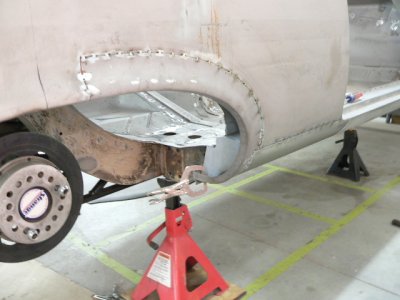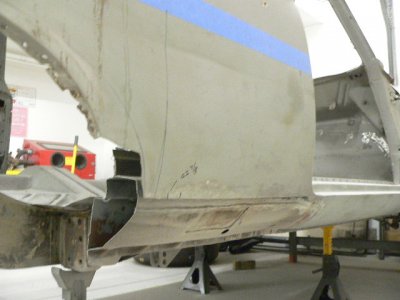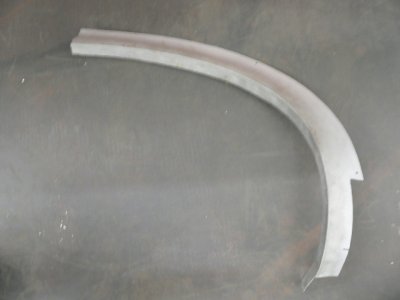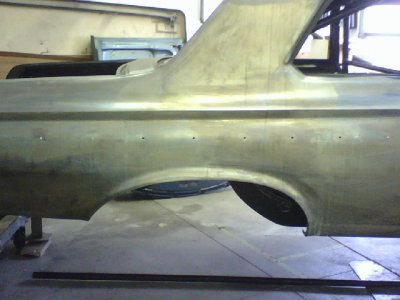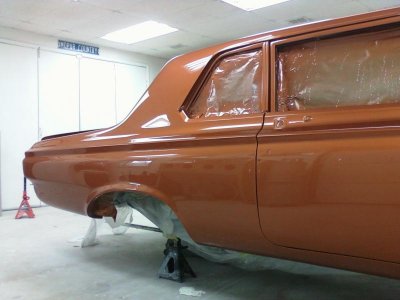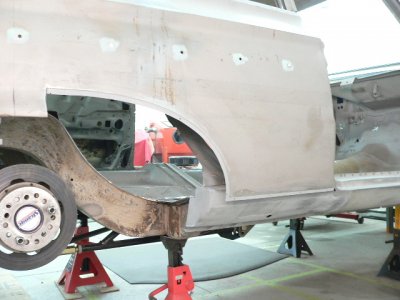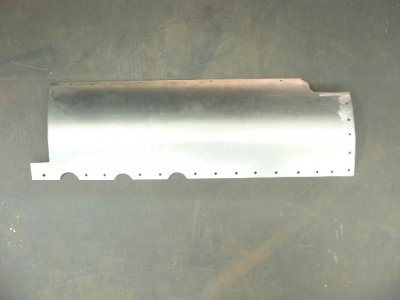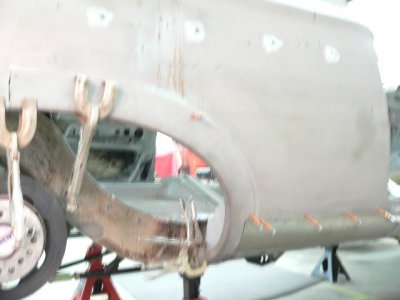Glenwood
Well-Known Member
- Local time
- 9:56 AM
- Joined
- Jun 19, 2015
- Messages
- 2,929
- Reaction score
- 2,854
- Location
- Kawartha Lakes, Ontario
some words of wisdom from an absolute master of metal on a thread I've been learning so much from! I actually can't wait to practice lol.
"One of the downsides to welding with a MIG is that
in order to weld sheetmetal and get good weld penetration each and every time,
we are virtually forced to do so by welding "dots" at a higher amperage setting
than you normally would with a full weld pass. Try this welding a full pass and
the weld will start to burn away the parent metal as the panel gets hot. Try
using the factory suggestions on your welder with dot welding and you'll have
weld dots sitting high up on the surface with no penetration, looking like a mud
dauber has been there.
 The downside to this "dot" welding method is that
The downside to this "dot" welding method is that
the weld dot and HAZ surrounding it will shrink, each and every time. By
comparison, a TIG or O/A fusion weld with absolutely tight joints and no filler,
can be done as one continuous pass from one end of the joint to the other. The
benefit here is that the weld and HAZ heat up and cool down progressively as you
weld, so the shrinking effects are less than you see with a MIG dot shrinking
circumferentially around each dot.
Make no mistake, you can still get
similar/acceptable results using the MIG, but it will require planishing each
dot to stretch the affected area back out, then grinding down each dot so it
will be out of the way for the next welded dot to be planished. Just by
virtue of the planishing and grinding process, the other methods are very much a
cleaner, faster, and preferred method if you can master the fusion process
and not need filler
rod. I am still working on that ability myself,
hence still using my MIG crutch
 . I should clarify that using these two processes
. I should clarify that using these two processes
with filler rod
can also give a softer, easier to work weld, but someone who can't walk and chew
gum at the same time may have issue with sitting there too long while feeding
filler, so if that's the case, the HAZ can be wider and more
inconsistent than that of a properly done MIG weld. All operator dependent.
Now that all that background info is laid, the major issue with welding
into a tight corner, regardless of which process being used, is that the
shrinking effects will compound (stack up?) on the inside corner, in some cases
making it that much more difficult to stretch and relieve the stresses to get
rid of the puckering/warp issues. By having a wide, sweeping radius, it gives us
more of a balance on either side of the weld, for less effort in planishing to
get the weld and HAZ back where it should be."
http://www.garagejournal.com/forum/showthread.php?t=182565&page=24
"One of the downsides to welding with a MIG is that
in order to weld sheetmetal and get good weld penetration each and every time,
we are virtually forced to do so by welding "dots" at a higher amperage setting
than you normally would with a full weld pass. Try this welding a full pass and
the weld will start to burn away the parent metal as the panel gets hot. Try
using the factory suggestions on your welder with dot welding and you'll have
weld dots sitting high up on the surface with no penetration, looking like a mud
dauber has been there.

the weld dot and HAZ surrounding it will shrink, each and every time. By
comparison, a TIG or O/A fusion weld with absolutely tight joints and no filler,
can be done as one continuous pass from one end of the joint to the other. The
benefit here is that the weld and HAZ heat up and cool down progressively as you
weld, so the shrinking effects are less than you see with a MIG dot shrinking
circumferentially around each dot.
Make no mistake, you can still get
similar/acceptable results using the MIG, but it will require planishing each
dot to stretch the affected area back out, then grinding down each dot so it
will be out of the way for the next welded dot to be planished. Just by
virtue of the planishing and grinding process, the other methods are very much a
cleaner, faster, and preferred method if you can master the fusion process
and not need filler
rod. I am still working on that ability myself,
hence still using my MIG crutch

with filler rod
can also give a softer, easier to work weld, but someone who can't walk and chew
gum at the same time may have issue with sitting there too long while feeding
filler, so if that's the case, the HAZ can be wider and more
inconsistent than that of a properly done MIG weld. All operator dependent.
Now that all that background info is laid, the major issue with welding
into a tight corner, regardless of which process being used, is that the
shrinking effects will compound (stack up?) on the inside corner, in some cases
making it that much more difficult to stretch and relieve the stresses to get
rid of the puckering/warp issues. By having a wide, sweeping radius, it gives us
more of a balance on either side of the weld, for less effort in planishing to
get the weld and HAZ back where it should be."
http://www.garagejournal.com/forum/showthread.php?t=182565&page=24



























